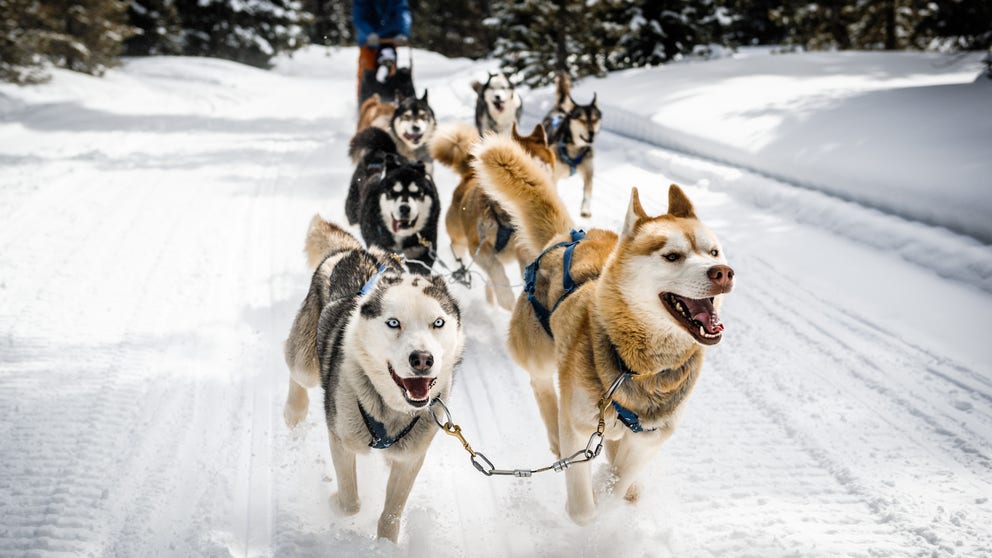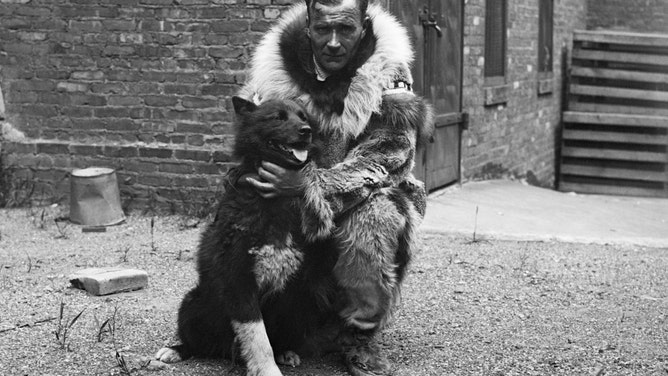‘These huskies have big hearts': How our bond with dogs inspired the Iditarod
The Iditarod Trail Sled Dog Race was founded in 1973 to honor and preserve the indigenous cultures that raised generations of sled dogs in the Arctic.
5 amazing facts about the Iditarod sled dogs
Running 100 miles or more a day, the canines that compete in the Iditarod Trail Sled Dog Race are in a league of their own.
Every year, teams embark on a nearly 1,000-mile-long journey through the vistas of Alaska.
Spanning a distance greater than a trip from Nashville to New York City, the Iditarod Trail Sled Dog Race has become a tradition that highlights indigenous cultures and traditions — particularly those involving man’s best friend.
"The bigger aspect of our race is not about a race at all. It's about a culture," said Chas St. George, the Chief Operations Officer of the Iditarod Trail Sled Dog Race. "This is really about the historical value of the sled dog."
Arctic adaptations
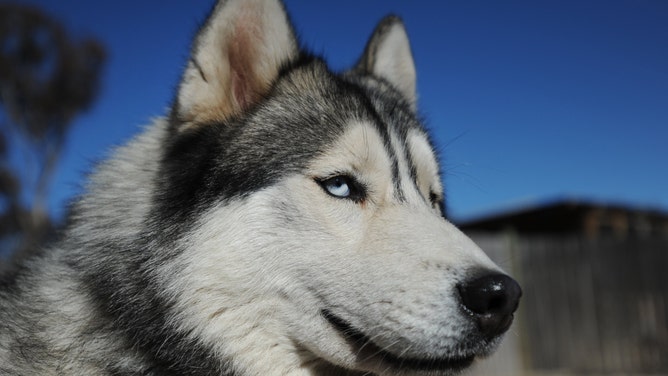
Huskies are built for the cold.
(Andrew Sheargold / Fairfax Media / Getty Images)
The sled dogs are unlike any other athlete on the planet, according to St. George.
One notable example of the dogs’ unique physiology is the size of their hearts, which are about 20-30% larger than other dogs.
"These huskies have big hearts — not only big hearts emotionally, but also big hearts, period, because it's a muscle," he said.
They also have thick hair and large paws that allow them to survive the cold, snowy climate of the North. St. George noted that the optimum temperature for a sled dog to run is between 15 degrees above zero and 20 degrees below zero.
HOW WILD ANIMALS SURVIVE THE FROZEN EDGE OF THE WORLD
Adaptations like these involve the sled dog’s evolution in such a unique climate.
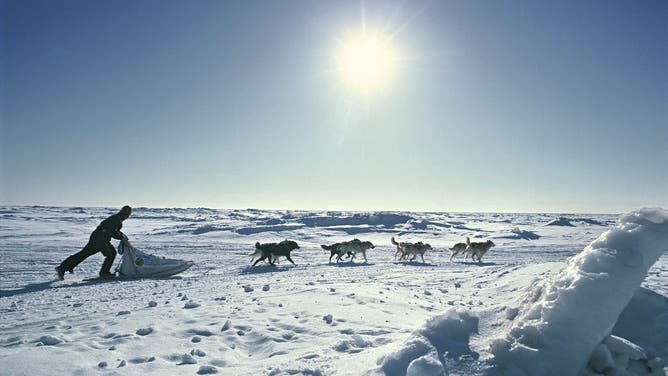
A musher and sled dog team in a snowy Alaskan landscape.
(Jean-Erick Pasquier / Gamma-Rapho / Getty Images)
According to St. George, the dogs were designed by the indigenous people of the circumpolar region to travel as working dogs.
"These are nomadic peoples who were always very opportunistic, always looking for a better land, better and better opportunities for them to continue on their quest to find the right place," St. George said.
"So, they had their hunting grounds, they had their fishing grounds, and the dogs became a part of that circle that they would sustain in," he added.
Playing coach and counselor
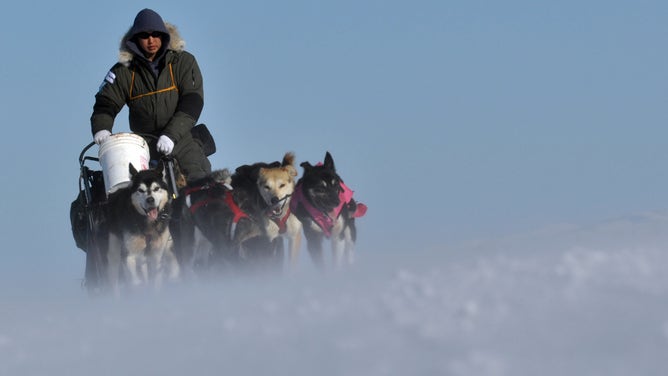
Iditarod musher Mike Williams Jr., from Akiak, Alaska, crosses from Kaltag to the Unalakleet checkpoint amid blowing snow during the 2011 Iditarod Trail Sled Dog Race Sunday morning, March 13, 2011.
(Bob Hallinen / Anchorage Daily News / Tribune News Service / Getty Images)
The physical adaptations of the dogs also led to their social adaptations. Many generations of sled dogs have learned to operate within a team led by a musher.
"They're very, very highly evolved when it comes to how they socialize," St. George said. "They're goofballs, and they're great dogs. But more than anything, they have high energy."
BEST IN SHOW: 5 DOG-THEMED STORIES THAT'LL REMIND YOU WHY THEY'RE MAN'S BEST FRIEND
The sled dog mushers are tasked with harnessing that energy in multiple dogs and channeling it into a singular, focused purpose, such as a sled dog race. According to St. George, the starting number of dogs per sled in the Iditarod is fourteen.

Ray Redington Jr., from Wasilla, Ak., feeds his dogs next to the Ruby Bible Church at the Ruby checkpoint during the 2014 Iditarod Trail Sled Dog Race on Friday, March 7, 2014.
(Bob Hallinen / Anchorage Daily News / Tribune News Service / Getty Images)
To teach the dogs to focus their energy, mushers start training them as puppies, spending about four or five years raising a puppy team to become an A-team.
St. George noted that every musher has to have excellent group counseling skills, and that they’re constantly reinforcing their performance in a positive manner.
"It's great to see how they are treated and how they are loved," he said. "It's a real unconditional bond that you have between that human and canine because they depend on each other."
"That's probably the most important thing," he added.
Saving the sled dog
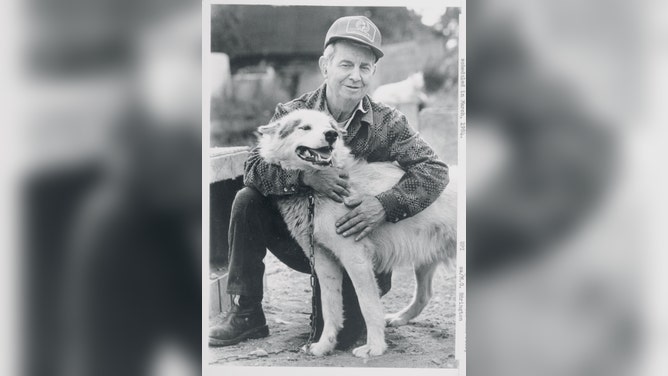
Joe Redington, Sr., founder of the Iditarod Trail Sled Dog Race, hugs one of his sled dogs in 1983.
(Bettmann / Getty Images)
About fifty years ago, sled dogs became the inspiration for ‘The Last Great Race.’
Joe Redington, Sr., an Oklahoma man who had moved to Alaska, took quite a shine to the sled dogs he saw in the country’s largest state. According to St. George, Redington saw that the dogs were being replaced by electric snow vehicles, and he had a vision of saving the animals and their place in the northern culture.
CREATIVITY IS KEY WHEN TRAINING ALASKAN SLED DOGS IN SUMMER MONTHS
For many years prior, sled dogs played a significant role is transporting people and goods. One of the most well-known cases was the ‘Great Race of Mercy’ in 1925, in which sled dogs traveled through inclement weather to deliver life-saving serum and end a diphtheria epidemic in Nome, Alaska.
St. George said Redington wanted to keep the sled dog a part of not just the history but the future.
In 1973, one year after the Iditarod Trail was formed by the U.S. Army, Redington hosted the first Iditarod Sled Dog Race.
"He worked very hard to build a purse that would be something that these humans would say, ‘Yeah, I want to run that race, I'd like to win that purse,'" St. George said. "I think the first purse was $12,000 for the winner, which wasn't too bad actually in 1973."
Redington named the race after the trail itself, Iditarod. Meaning ‘distant’ or ‘distant place,’ Iditarod comes from languages spoken by some indigenous groups in Alaska.
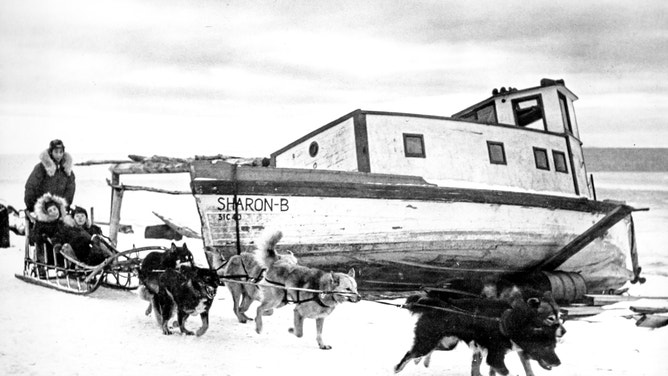
Alaska Natives on a sled pulled by their dogs.
(Marka / Universal Images Group / Getty Images)
According to St. George, many of the mushers to run the first race had strong indigenous backgrounds. Because of this, they were well-versed in the ecosystem that they were going to travel.
Redington was an outdoorsman who developed a heart for Alaska, for learning about Alaska’s native cultures and the sled dogs the indigenous people raised and loved.
"He was one of these gentlemen that just had this wonderful passion for these dogs," St. George said. "He never lost that passion."
A marriage made in the Arctic

Tim Pappas (Big Lake, AK) checks on his lead dogs prior to their start during the restart of the 2020 Iditarod Sled Dog Race at Willow Lake on March 8, 2020 in Willow, Alaska.
(Lance King / Getty Images)
This bond between dogs and humans is what makes the Iditarod Sled Dog Race so iconic, according to St. George.
"When you look at the Arctic Circle, and you look at how all these people from all these different parts of the world converged on this Arctic Circle, it was dogs that got them there," he said. "It wasn't horses, it wasn't cows, it wasn't this or wasn't that — it was sled dogs."
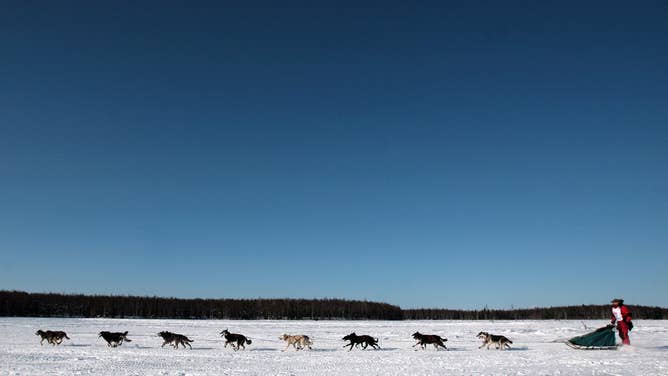
Three time Yukon Quest winner and cancer survivor Lance Mackey mushes his team over frozen Willow Lake as Iditarod XXXV official begins 04 March 2007 in Willow, Alaska.
(Jim Watson / AFP / Getty Images)
While the sled dogs were adapted to the cold, harsh weather, they were also very adapted and aligned with the people that they were with, noted St. George.
"It was a marriage made in the Arctic," he said.
